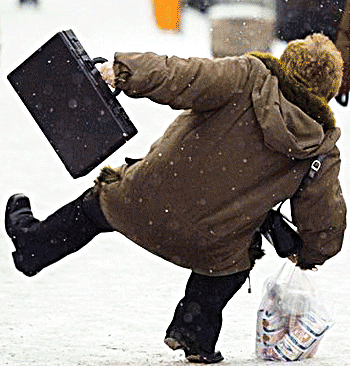It’s winter, if you live in our area and haven’t seen some snow and ice yet, you will soon. We’ve talked about how best to melt snow and ice on your ramp here, but what about after you are off your ramp?
Here are some handy tips to reduce the risk of falling and getting hurt
- If you don’t have to go out, DON’T! It sounds simple but so many of us think we need to go out when we really could wait a day or two. The mail will still be in your box tomorrow.
- Think about the best route to where you are going and plan on taking a little extra time to get there.
- SLOW DOWN! Avoid rushing and taking shortcuts where snow and ice removal is incomplete. Walk slowly and never run on icy ground.
- Check your footwear, function over style. No heels. Flat footwear with rubber soles (not leather) provides the best traction.
- If there are handrails, use them.
- Take small steps, this will help you keep you more centered and balanced.
- Try and keep your hands free, avoid carrying lots of heavy shopping bags, especially on steps.
- Be careful while getting in and out of your vehicle, hold on to something for support. Maybe a HandyBar is just the trick!
- Wipe your feet! Just like your momma used to tell you, make sure you wipe your feet on floor mats when you enter a building. Make sure to get the moisture off your shoes, not only will this help protect you, but also it will protect others from having to walk on wet slippery surfaces.
- Finally watch out for others. We all could do a little better watching for those of us that are less mobile, help them if you can do it safely!
Remember the statistics
- One out of three older adults (65 or older) fall each year.
- Among older adults, falls are the leading cause of both fatal and non-fatal injuries.
- In 2013, 2.5 million nonfatal falls among older adults were treated in emergency departments and more than 734,000 of these patients were hospitalized.
- Twenty to thirty percent of people who fall suffer moderate to severe injuries such as lacerations, hip fractures, and head traumas. These injuries can make it hard to get around or live independently, and increase the risk of early death.
- Falls are the most common cause of traumatic brain injuries.
- Most fractures in older adults are caused by falls.
Don’t become one of these statistics. Take precautions! Live life to the fullest, don’t let a slip or fall slow you down.



